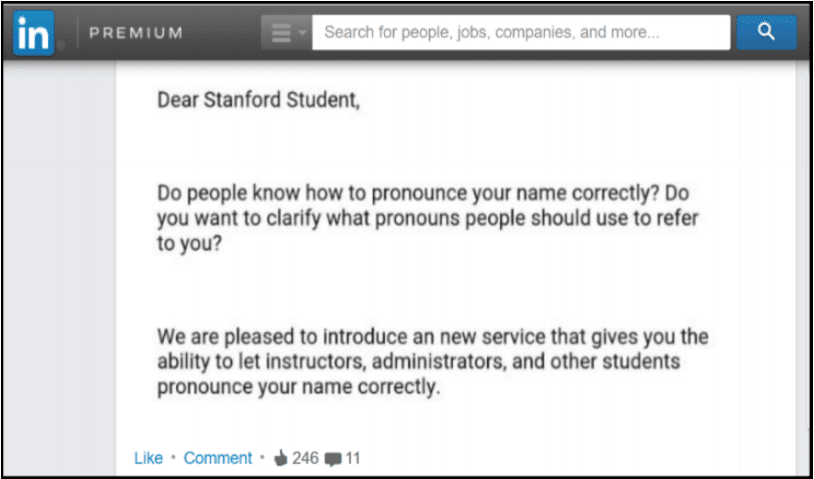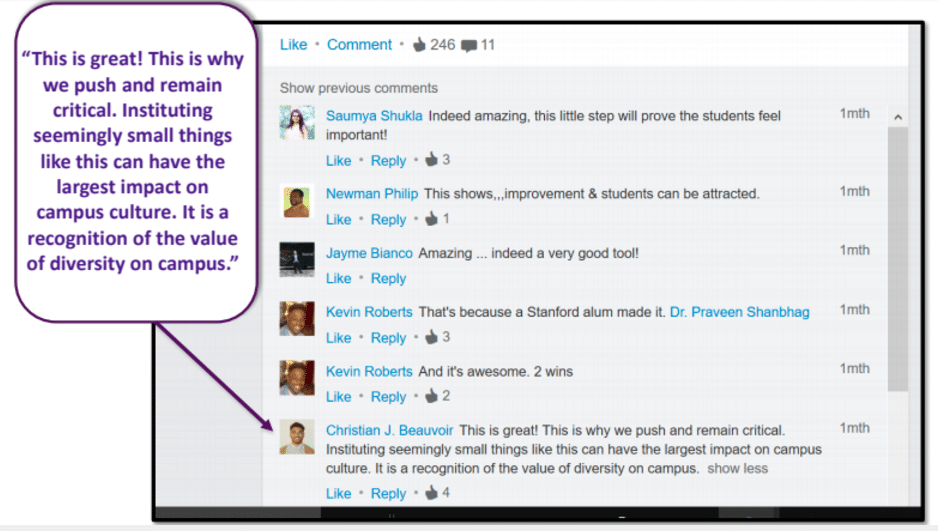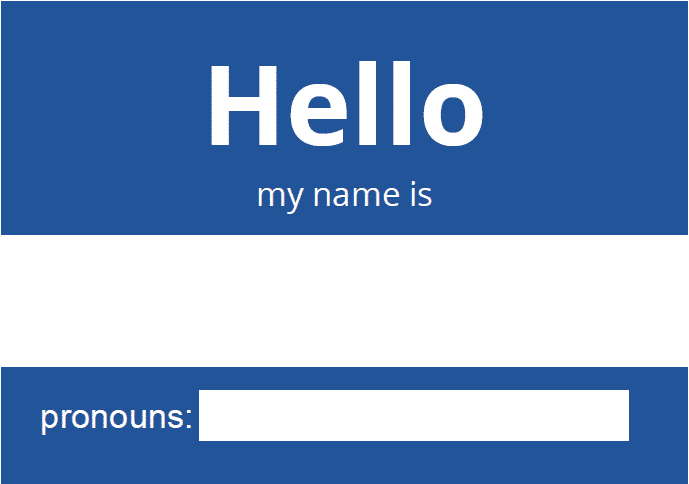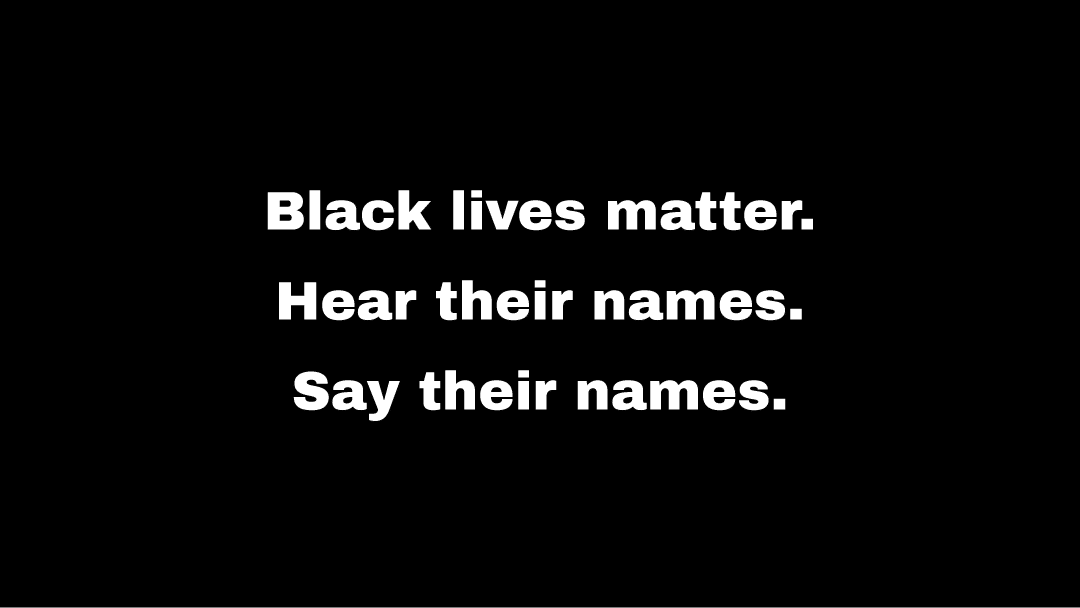This post is a continuation of a previous post, What we learned at AACRAO 2017: Part 1.
At this year’s American Association of Collegiate Registrars and Admissions Officers (AACRAO) conference, we had the opportunity to partner with Thomas Black, Associate Vice Provost and Registrar at Stanford University.
In part of 1 of this post, we learned about the role administrators like Black are playing in meeting students’ calls for increased diversity, equity, and inclusion in higher education. We defined inclusion by breaking it into two key tenets–respect and belonging.
Respect is “not just the experience of individuals and groups on a campus; it’s also the quality and extent of the interaction between those various groups and individuals that determines a healthy campus climate.” Belonging, as defined by the University of South Carolina, is “about feeling like you belong and that your life, your voice and your contributions truly matter through the mutual civility and respect that we show one another.”
We also learned that perceived indifference accounts for 30% of student attrition nationwide–greater than other reasons such as finances, academics, or general happiness. When students feel like faculty and staff do not care about them on a personal basis, they are more likely to leave.
In this part of our post, we will look at strategies colleges and universities can employ to address student perceptions of indifference, and will share the impact of these practices at Stanford.
Where to begin?
The relationship between creating the right environment and retaining successful students is clear, but taking action is more challenging. With countless options available for promoting inclusivity–from housing to extracurricular activities, course offerings to scholarships–there is no single lever guaranteed to make students feel welcome.
Correctly pronouncing students’ names and using preferred pronouns impacts nearly every aspect of a student’s college experience–from what’s posted on their dorm room door to how they’re greeted or called upon in class.
“Mispronouncing students’ names and using the wrong pronouns can increase ‘belonging uncertainty,’ which Stanford research shows can affect a student’s performance, stress levels and overall sense of being a valued part of the community.”
– Dereca Blackmon, Associate Dean and Director of the Diversity and First Generation Student Office
Failing to get names and pronouns right makes students question whether or not they belong on campus, which, according to a Stanford research study, can affect a student’s academic performance and stress levels.
In a world in which the concept of gender is constantly evolving, making assumptions about someone’s name or gender identity can be detrimental. A white paper on the importance of preferred pronouns from Bryn Mawr College explains that “To incorrectly gender someone can cause the person to feel disrespected, alienated, or dysphoric (or a combination of the three)…Calling roll from a sheet without knowledge of how someone wants to identify themself in the classroom can be very harmful.”
Making the effort to use preferred pronouns and pronunciations is critical, but singling students out during roll call can make them uncomfortable. A more respectful solution is to empower students to educate faculty and staff on their preferred pronouns and correct name pronunciation privately or ahead of their first interactions. NameCoach’s suite of tools helps schools proactively address the challenge before the first day of class and beyond.
Reception at Stanford
Since introducing NameCoach tools like Name Badges and Commencement Service and integrating with learning management systems and CRMs, Stanford has noticed an outpouring of support from students. To demonstrate the University’s commitment to diversity, equity, and inclusiveness, they implemented NameCoach campus-wide. This indicates that everyone on campus is expected to meet the same high standards.
By taking action, the school has drawn positive attention to a nuanced issue, and students are applauding the effort on platforms like LinkedIn and Twitter.
Additionally, according to Mic.com News, “Students applauded the news on Twitter, which entered the public conversation just after the university announced a liquor ban, a move some viewed as a misguided attempt to address campus sexual assault.” Students were receptive of the news, even on the heels of a highly contested policy change, and seem to be accepting of the university’s commitment to improving the campus cultural climate.
Scaling Stanford’s Efforts
There is no single blueprint that leads to the creation of an inclusive environment, but NameCoach’s partners in higher education are proving that small steps in the right direction can build the momentum needed for large-scale change.
We are proud to partner with Stanford and are ecstatic about the impact they’ve seen since implementing NameCoach on campus!
Our hope is that the positive reception Stanford has seen both from students and the public will inspire more schools to take action towards becoming more culturally inclusive. By addressing small, day-to-day student experiences, schools can improve retention rate, create more positive experiences for students, and increase awareness about issues of diversity, equity and inclusion.













